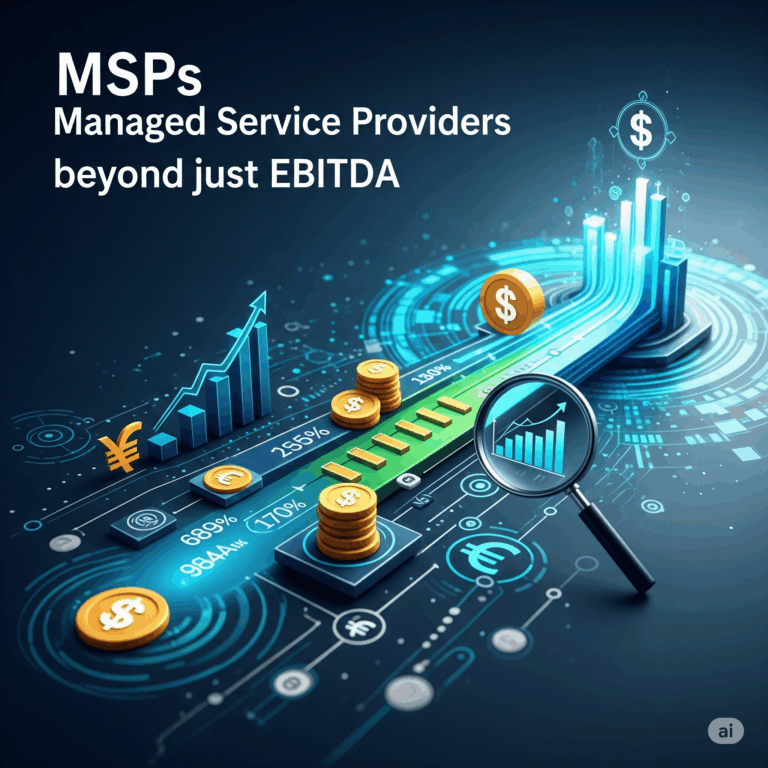Often, the most painful phase of selling your business is due diligence. You can think of diligence as an audit of your MSP’s financials, customer contracts, operational efficiency, and legal liabilities. As discussed in our previous article, M&A 101: After You Decide to Sell Your MSP, diligence begins after signing a Letter of Intent (LOI) with a potential buyer.
Why Do Buyers Conduct Diligence?
Due diligence is when the buyer conducts a thorough investigation to confirm your claims about your business. The goal is to uncover any potential risks and verify that the business is as represented. With millions of dollars at stake, buyers need to know that they are acquiring a stable and profitable business.
What Will Buyers Examine During Diligence?
Buyers will likely focus on several key areas of your business:
- Financial Performance: Buyers will verify the consistency of revenue, profit margins, and cash flow trends. They will also ensure that the financial reports reflect the business’s true performance.
- Client Contracts and Retention: Long-term contracts with clients, especially those generating recurring revenue, will be scrutinized. Buyers prefer revenue that is diversified across several clients. In general, they like to see your top customer accounting for less than 10% of your revenue and your top 5 customers responsible for less than 20%.
- Legal and Compliance Standing: Buyers will examine your business for any outstanding legal issues or regulatory compliance risks that could create liabilities post-acquisition.
- Market Position and Growth Potential: In addition to analyzing the current state of the business, buyers will assess future potential. Is the business well-positioned in the market? Are there opportunities for growth, or are there competitive threats that could limit future success?
How Can I Prepare My MSP for Diligence?
Proper preparation for due diligence can help MSP owners avoid surprises and smooth the transaction process. Here’s how you can get ahead:
- Clean Up Financials: Ensure that financial records are up-to-date and accurate. Present a clear picture of cash flow, profit and loss statements, and tax filings.
- Organize Client Contracts: Verify that all client contracts are signed, valid, and up to date, especially those for recurring services.
- Resolve Legal Issues: Address any pending legal matters, from litigation to compliance risks. Ensure all necessary licenses, permits, and regulations are in order.
- Document Operational Processes: Document key processes, technologies, and service delivery systems to ensure that the business can be easily transferred to new ownership.
- Showcase Growth Potential: Don’t just present the current state of the business—highlight its future potential. Whether it’s entering new markets, expanding service offerings, or leveraging new technologies, showcase the opportunities that make your MSP attractive for the long term.
- Avoid Red Flags: Red flags can erode buyer trust, lower your business’s perceived value, and lead to deal delays or jeopardize the entire transaction.
Common Red Flags
Some common red flags include:
- Inconsistent Financials: If your financial records don’t align with the profitability or cash flow numbers provided, this can erode buyer trust.
- High Customer Concentration: If too much revenue comes from just a few clients, the business may be perceived as too risky.
- EBITDA Discrepancies: If EBITDA consistently diverges from actual cash flows, it might signal hidden issues like poor collectability or excessive inventory that could misrepresent the company’s financial health.
- Outdated Technology: If the MSP relies on outdated systems that will require significant upgrades, buyers may factor that into their valuation.
- Employee Turnover: A high turnover rate, especially among key employees, can create concerns about operational stability after the transaction.
For more insights or to have a conversation about your business, contact [email protected].




